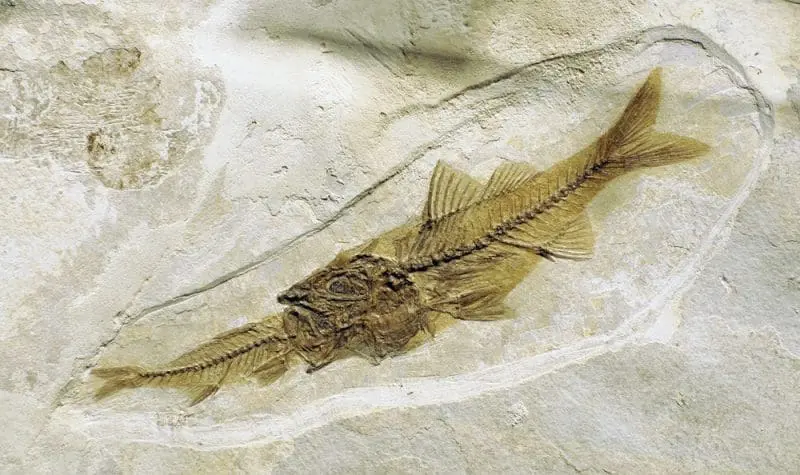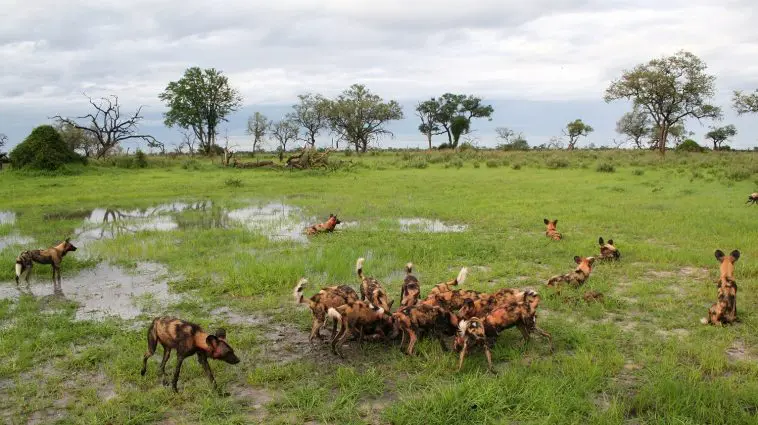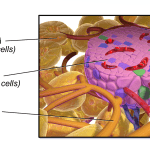[Originally published as the first part of Why is Nature So Evil?]
I once watched a video of a leopard killing an impala on the African Savannah. Browsing the internet is rarely an unforgettable experience, but this encounter was an exception. I thought about this one for weeks. Make no mistake, I do not have a weak stomach or an emotional attachment to small innocent animals. In fact, predation has always been a fascination of mine. David Attenborough’s BBC documentary The Hunt remains my favorite nature series. But in this instance, it haunted me. The predation event in this video was not a valiant chase between predator and prey. It wasn’t a dramatic struggle for survival with a winner and a loser. And it wasn’t anything else you might have heard a wildlife documentarian say about the circle of life. It was… evil.
Let me explain.
The video begins with an impala standing by herself in a clearing as her newborn offspring emerges and falls to the ground. The moment the baby hits the ground, the mother hears a noise and sprints away, never entering the frame again. A leopard appears beside the infant, which is still wet from birthing fluid. It sniffs the baby, giving it a quick lick to taste test it. The newborn, unaware that anything is wrong, looks around calmly, perhaps wondering where its mother is. The big cat sits down beside the impala, occasionally nudging or licking it.
This lasts for minutes. Had the photographer taken a photo rather than a video, one might mistake the duo as one of those “unlikely friendships” you see in nature magazines. But eventually, when it is ready to move on, the leopard stands up, grabs the impala by the neck, and picks it up. The impala kicks its legs in protest for a moment before going limp in the leopard’s jaws.
Why Natural Evil?
People almost never think of nature as evil. Sure, it can be ugly and sad sometimes, but the lack of moral agency among animals and plants often holds us back from considering nature as morally corrupt. We also recognize that death in nature is vital for sustaining life. The great king Mufasa taught us this when he explained the circle of life to his son, Simba. What Mufasa neglected to mention to Simba is why infanticide, forced copulation, parasitism, cannibalism, starvation, disease, disasters, and other forms of suffering are so rampant in nature too (even in lions!).
We call these perversions “Natural Evil,” or evil that is not a direct cause of human sin. While murder, wars, racism, and bullying are some examples of “Moral Evil,” Natural Evil is a unique theological challenge. It seems to be designed by God rather than simply an effect of human nature and free will.
Adam and Eve must leave the perfect garden into a world full of suffering, disasters, and evil. The origin of Natural Evil remains up for debate today, with many Christians denying that Adam’s sin is the cause.
The Theology of Natural Evil
Christian theologians largely agree that Moral Evil originates from the rebellion of man against his Creator in Genesis 3. Traditionally, most theologians have explained Natural Evil the same way. Not only did God curse mankind in Genesis, but He also cursed His entire creation for the sin of Adam and Eve. Natural disasters, starvation, predation, and other evils are a direct effect of this curse.
This interpretation fits a pattern in Scripture in which God judges all of nature for the sin of mankind. For example, the Flood of Noah’s day killed all land animals as judgment for the wickedness of men. Later in the Old Testament, God instructs Israel to sacrifice animals to temporarily atone for their sins. Only after Christ’s resurrection—the eternal atonement—do men no longer have to kill animals. The traditional approach, in which Natural Evil is a direct cause of the Fall, is consistent with the rest of the Bible. It seemingly solves the theological quandary.
What About the Fossils?

The discussion of natural evil became even more complicated when scientists began accepting the idea of an ancient earth. The fields of old-earth paleontology and evolutionary biology suggest that animals have been eating and parasitizing each other long before humans entered the story. For Christians, accepting an old earth means rejecting the Fall as the cause of Natural Evil. According to this view, predation, disease, and parasitism were present on earth for millions of years before Adam’s sin. William Dembski, an old-earth creationist, puts the problem nicely:
For the young-earth creationist, tracing natural evil to humanity’s sin and the fall is unproblematic… But in a world that is much older and in which natural evil reigns prior to the arrival of humans, how can natural evil be ascribed to human moral evil, as classic Christian orthodoxy has traditionally taught?1
Any theory in which natural evil predates sin dramatically complicates the issue. If man’s sin did not cause natural evil, what did? Did God create Natural Evil within His original creation? Did He use Natural Evil to create man through millions of years of slow evolution? Suddenly this discussion becomes mentally exhausting, as old-earth Christians must come to terms with Natural Evil all over again.
To be continued…
Footnote
- Dembski, William A.. “How Can We Make Sense of Natural Evil?” From A Comprehensive Guide to Science and Faith. 2021.






